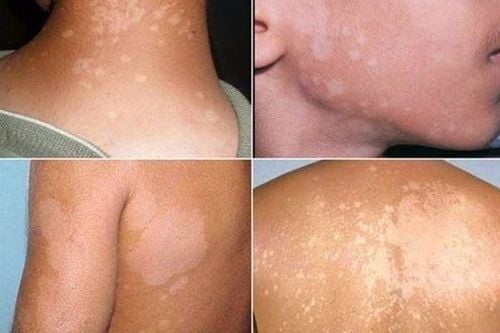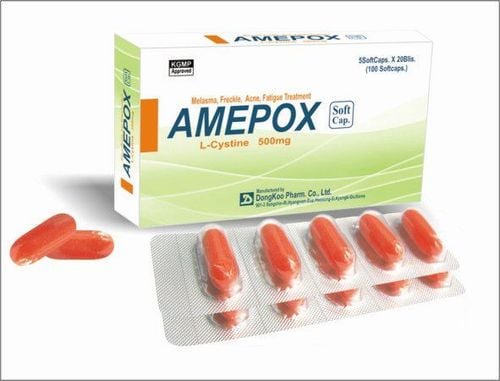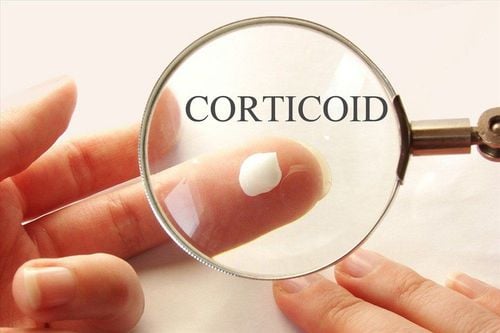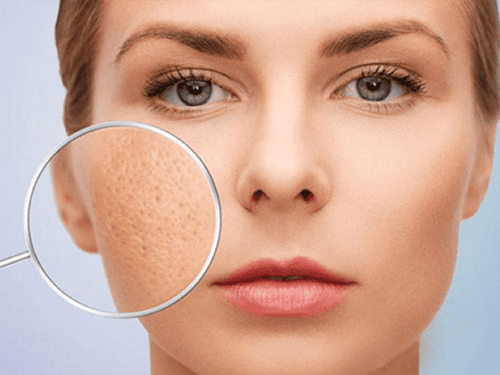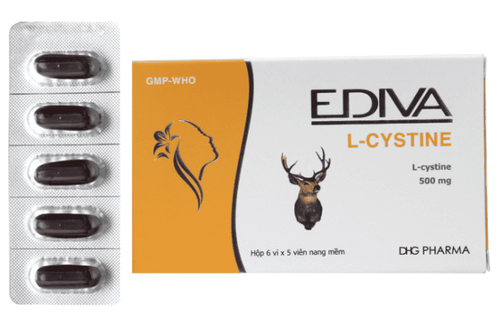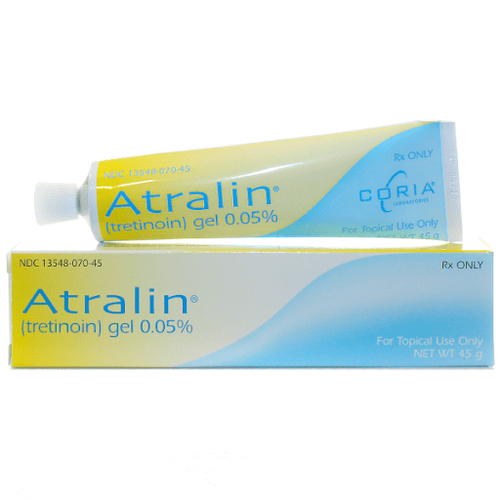This is an automatically translated article.
Cosmetics containing AHA are increasingly appearing in the beauty market of women. So what is the use of AHA in cosmetics, is it safe to use cosmetics containing AHA, what should be noted?1. What are AHAs in cosmetics?
Alpha hydroxy acids are also abbreviated as AHAs. This is a group of acids that are derived from plants (cane and citrus fruits or grapes) and animals (royal jelly).Currently, on the market, there are many types of cosmetics containing AHA known as anti-aging cream for daily use, rose water, exfoliating cream, peeling, ... using 7 types of AHA including : Lactic acid, glycolic acid, citric acid, malic acid, hydroxycaproic acid, hydroxy caprylic acid, tartaric acid.
Among them, glycolic acid and lactic acid are the most well-researched and commonly used because they are less likely to cause skin irritation. Therefore, most AHA products purchased over-the-counter have lactic acid or glycolic acid as an ingredient.
2. What are the effects of cosmetics containing AHA?
Most cosmetics containing AHAs work to exfoliate the skin. Not only that, AHAs also bring other great effects such as:Brighter and fresher skin Enhance collagen fiber production in the skin and blood flow to feed skin cells Reduce wrinkles located on the surface of the skin Adjust skin pigmentation discoloration due to scars and age spots Prevent acne Increase product absorption 2.1 Cosmetics containing AHAs help exfoliate dead skin cells Exfoliation is the main use of AHA-containing cosmetics, as the basis for bring other great effects. Exfoliation is the process of shedding skin cells, removing them, and from there new skin cells are formed.
The process of skin cell replacement will become slower and slower with age, leading to an accumulation of too many dead skin cells on the surface and causing the skin to darken, acne, appear age spots and wrinkle.
At this time, using cosmetics containing AHA will help remove accumulated dead cells. However, depending on the AHA concentration of the product, the exfoliating ability will vary.

Các loại mỹ phẩm chứa AHA đều có công dụng tẩy tế bào chết
2.3 Cosmetics containing AHAs help increase collagen fiber production in the skin. For the skin to be smooth, it is thanks to a type of fiber but rich in protein, known as collagen fiber. As we age, these collagen fibers break down. This process can also happen faster when the skin is regularly exposed to the sun. All lead to dull and sagging skin.
Structurally, the dermis is where collagen is stored. When using cosmetics containing AHA, the upper epidermis layer is removed, AHA works in the dermis, destroying old collagen fibers and helping to increase the production of new collagen.
2.4 Cosmetics containing AHA to help reduce wrinkles on the skin AHA cosmetics also have another use of anti-aging, changing the overall texture of the skin. But AHA only reduces wrinkles on the surface of the skin, not deep wrinkles under the skin. To treat deep wrinkles, it is necessary to use other methods that are more effective than filler injections, laser resurfacing.
2.5 Cosmetics containing AHA to help increase blood flow to skin cells In addition to the above uses, with anti-inflammatory properties, cosmetics containing AHA also help increase blood flow to skin cells, thereby helping to improve the condition. dull skin. With abundant blood flow, skin cells are guaranteed to receive enough oxygen and other necessary nutrients.
2.6 Cosmetics containing AHAs help reduce pigmentation and even skin tone Age increases the risk of skin discoloration such as age spots, especially with frequent sun exposure . In addition, the skin is discolored due to melasma, post-inflammatory hyperpigmentation, acne scars.
At this time, using cosmetics containing AHA can promote skin cell changes, forming new, even skin cells. To treat skin discoloration, the American Academy of Dermatology advice is to choose an AHA that contains glycolic acid.
2.7 Cosmetics containing AHAs to help prevent and treat acne Products that treat acne and dark spots caused by acne often have benzoyl peroxide as the main ingredient. However, now, cosmetics containing AHA also have this effect.
When dead skin cells accumulate along with bacteria, excess oil leads to clogged pores and acne. At that time, use AHA to remove dead skin cells, help pores to be more open, congestion is eliminated.
In people with acne-prone skin, it is easy to experience large pores. Therefore, using cosmetics containing AHA can shrink pores. In addition, the lactic acid or glycolic acid found in AHA products that help change skin cells also has another effect, which is reducing acne scars. And malic and citric acids help soothe skin inflammation caused by acne.

AHA trong mỹ phẩm có tác dụng điều trị mụn trứng cá
3. How much concentration should be used in cosmetics containing AHA?
The US Food and Drug Administration recommends that consumers choose to use cosmetics containing AHAs with concentrations not exceeding 10% to avoid experiencing side effects. In addition, some other recommendations say that AHA cosmetics should not be used with concentrations exceeding 15%.Daily cosmetic products such as serums, toners and moisturizers usually contain lower concentrations of AHAs, only about 5%. With more concentrated AHA products, it is recommended to use less frequently to avoid side effects, such as products containing glycolic acid.
4. Does using cosmetics containing AHA cause side effects?
Some effects may occur such as sunburn, skin blistering, itching, eczema if consumers have never used cosmetics containing AHA. To avoid skin irritation, it is recommended to use AHAs a few times a week and every other day. As the skin gets used to the product, increase the frequency of application to the skin daily.In addition, it is necessary to be more careful when using cosmetics containing AHA and going out in the sun, because with the exfoliating effect of products with concentrated AHA concentrations, it can make the skin sensitive. than with more UV rays.
Therefore, in order not to get sunburned, it is necessary to use sunscreen regularly, apply it daily every time you go out in the sun and after a period of time, pay attention to reapply according to the product's instructions.
5. What should you pay attention to before using cosmetics containing AHA?
You should consult your doctor before using cosmetics containing AHAs if you have recently shaved, burned or have open wounds on your skin, have rosacea, psoriasis, or eczema. In addition, pregnant or nursing mothers also need to consult a doctor if they want to use cosmetics. Cosmetics containing AHA with the main function of removing dead cells on the surface of the skin, making the skin brighter and smoother, preventing acne and limiting wrinkles appearing on the skin.Please dial HOTLINE for more information or register for an appointment HERE. Download MyVinmec app to make appointments faster and to manage your bookings easily.
References: fda.gov, healthline.com



